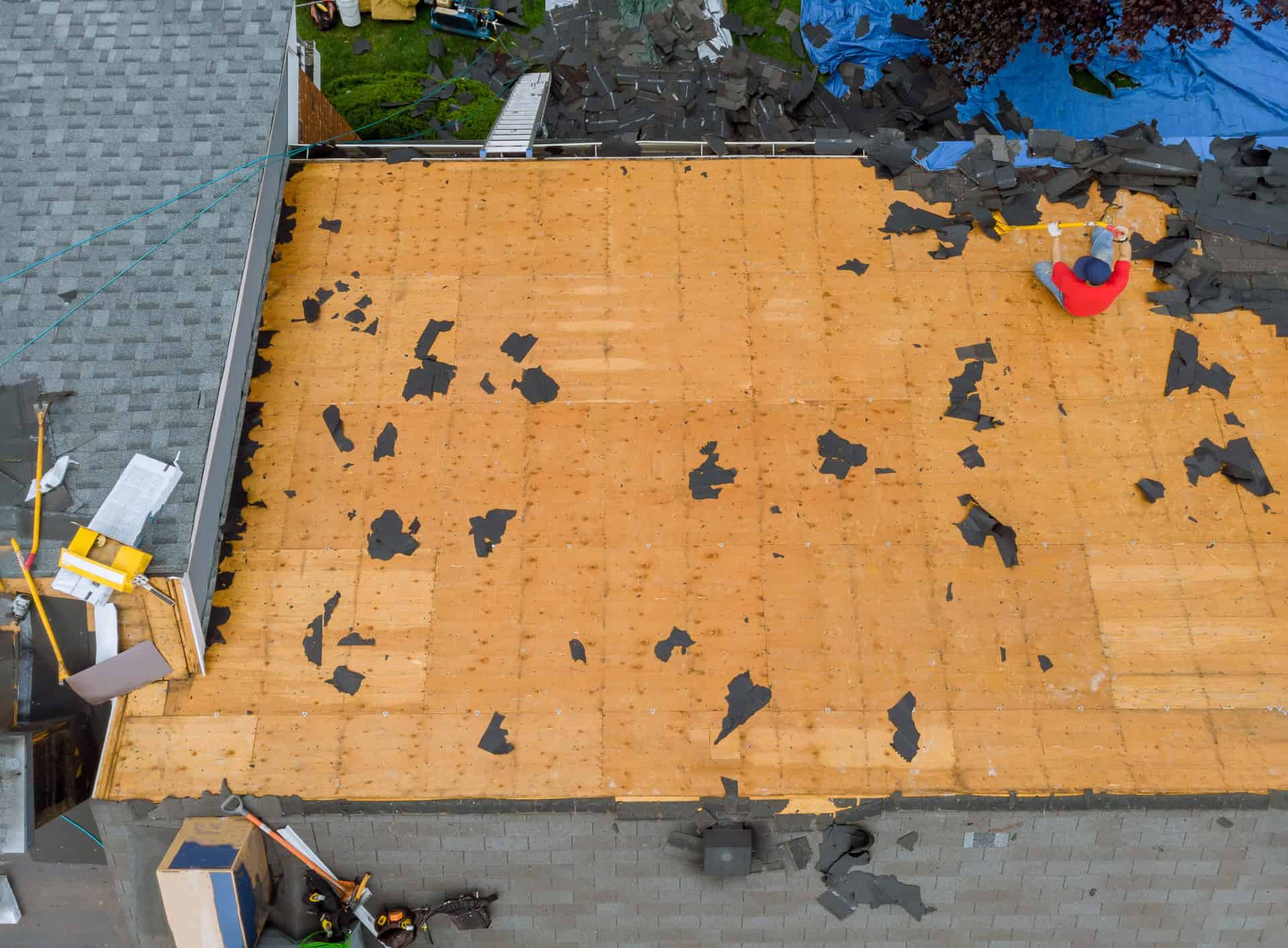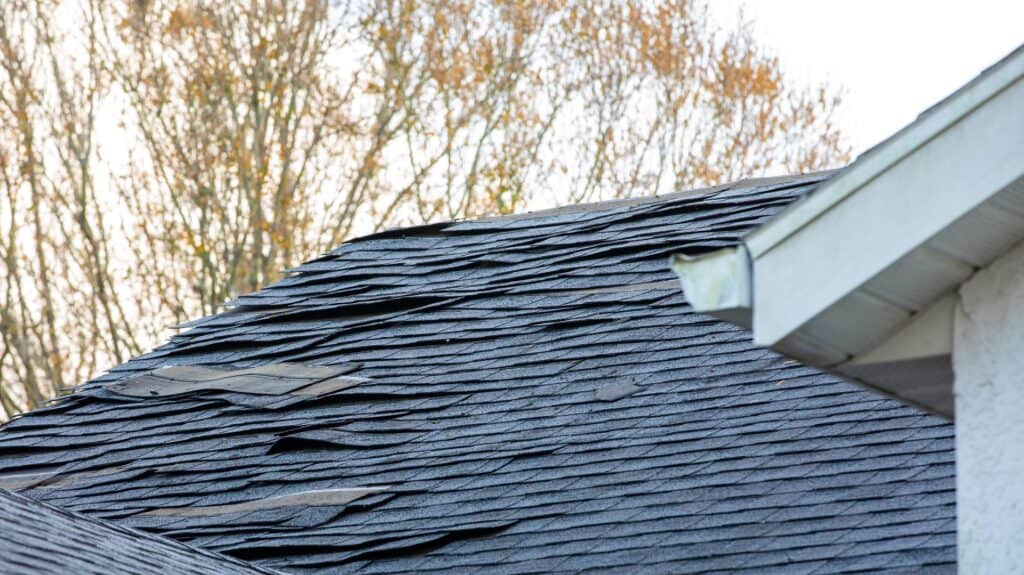
How Often Should A Roof Be Replaced? (2025 Update)
GET A FREE INSPECTIONFree Roof Inspection
Your roof is like your home's superhero cape, protecting it from everything nature throws its way. But even superheroes need a break, and your roof has an expiration date. With prices for materials and labor going up, and the weather getting crazier, knowing when to replace it is super important. Getting a new roof before it's a disaster isn't just about looks; it's a smart move that keeps your home or business strong and valuable for years to come. If you wait too long, you're looking at a whole bunch of headaches, from small leaks messing up your furniture to serious damage and nasty mold, all costing way more than a timely fix. Spotting the warning signs of a worn-out roof and thinking ahead about what your property will need are the best ways to keep it safe and sleep soundly at night.
How often should you have your Roof Inspected and when is it Time to Replace It?
Roofs are an integral part of any home and it is important to keep them in good condition. This can help you save money on costly repairs and replacements. Regular roof inspections are crucial to maintain the integrity of your roof and identify any potential issues. It is generally recommended to have a professional roof inspection performed at least once a year. However, there are certain situations when more frequent inspections may be necessary. For instance, if you live in an area with severe weather conditions, such as frequent storms or heavy snowfall, it's advisable to have your roof inspected more frequently. If you notice any signs of damage, such as leaks, missing shingles, or sagging areas, schedule an inspection as soon as possible.
As for determining when it's time to replace your roof, several factors come into play. The lifespan of different roofing materials can vary significantly., It's essential to consider the type of roof you have.
Additionally, visible signs of damage or wear such as extensive leaking, significant shingle damage, or multiple missing tiles indicate that your roof requires replacing. Age, extensive repairs, and frequent issues can also be indicators. Consulting a professional roofer is essential for a thorough evaluation of your roof's condition. They can assess the extent of the damage, consider the remaining lifespan of the roof, and provide guidance on whether repair or replacement is the best course of action.
What Factors Determine The Lifespan of Your Roof & How Can You Extend It?
Several factors contribute to the lifespan of a roof, and taking certain measures can help extend its longevity.
Firstly, the quality of materials used in the roof construction is crucial. High-quality roofing materials tend to have longer lifespans compared to lower-grade options. Additionally, proper installation by experienced professionals is vital to ensure the roof's durability. Climate plays a significant role as well. Extreme weather conditions, such as heavy rain, snow, hail, or intense heat, can accelerate roof deterioration. Regular maintenance is essential to extend a roof's lifespan. This includes regular inspections to identify and address any issues promptly, such as damaged or missing shingles, leaks, or signs of wear. Cleaning the gutters, removing debris, and trimming overhanging branches can prevent moisture buildup and potential damage. Adequate roof ventilation helps regulate temperature and moisture levels, reducing the risk of mold or rot. Proper attic insulation also aids in maintaining consistent temperatures and minimizing stress on the roof. Lastly, being cautious during roof activities, such as walking or installing equipment, can prevent unnecessary damage.
How Often Should A Shingle Roof Be Replaced?
Asphalt shingles are super common because they don't break the bank and are pretty easy to install. They usually hang in there for 20 to 30 years. But, if you live somewhere with crazy weather – think scorching heat, tons of sun, and wild storms – their life can get cut short to just 15-20 years. All that pounding from the elements really wears them down, leading to cracks, curls, and losing those little granules, which basically means your roof kicks the bucket sooner. So, in tough climates, keeping an eye on them is super important to catch any early signs of wear and tear.

How Often Should A Tile Roof Be Replaced?
Clay or tile roofs are renowned for their exceptional durability and timeless aesthetic appeal. They can easily last anywhere from 50 to 100 years. They're naturally good at resisting fire, bugs, and rot. However, even though they're durable, individual tiles can be a bit fragile and might break if something heavy hits them or if hail strikes. So, installers and repairers need to be careful, but our drone high technology resolves the issue of walking on the roof.
How Often Should A Metal Roof Be Replaced?
Metal roofs are known for being tough, but let's be real, nothing lasts forever.
Not Totally Hands-Off: While you won't be up there every weekend, metal roofs aren't zero maintenance. You'll still need to do occasional checks for things like loose screws, small dents, or junk piling up to keep them in good shape and make them last. And don't forget, the initial cost for a metal roof can be way more than other materials, so you've got to weigh that against the long-term benefits.
Standard Life: Most regular metal roofs can definitely hit 40+ years, and sometimes even longer if you treat them right.
Fancy Metals: If you're really going for the long haul, high-end metals like copper or zinc, especially with special coatings, can reportedly last 70-100 years.These come with a hefty price tag upfront, but if you're planning on staying put for generations, they might be worth it.
Built Like a Tank (Mostly): Metal roofs are super resilient. They're good at fending off fire, rot, bugs, and mold. They can handle some pretty intense weather, like strong winds, heavy snow, and even hail, often without a scratch. This makes them a decent choice for most places, offering a good amount of protection.
What Really Determines Your Roof's Lifespan?
It's super important to remember that how long your roof actually lasts isn't just about what it's made of.Several significant factors contribute:
- Local Weather: Like we said with asphalt shingles, your local climate is a huge factor. Extreme temperatures, high humidity, frequent storms (wind, hail, heavy rain), and intense sun can all beat down on any roofing material faster.
- Installation Quality: How well your roof was put on initially is everything. Poor installation, no matter how tough the material, is going to mean a shorter life. Making sure the flashing is done right, there's good ventilation, everything's fastened securely, and the installers followed the manufacturer's rules is crucial for your roof to do its job and last.
- Maintenance: Keeping up with regular maintenance is key to getting the most years out of your roof. This means routine check-ups, cleaning out your gutters, getting rid of debris, fixing any little issues quickly (like a loose shingle, a tiny leak, or rusty fasteners), and dealing with things like moss or algae. Being proactive can stop small problems from turning into massive, expensive headaches.
By understanding the unique features of each roofing material and considering the big impacts of climate, installation, and maintenance, homeowners can make smart choices that will help their roof last and perform well for years to come.
Signs it’s time to replace
- Missing, curling or cracked shingles/tiles.
- Leaks or water stain inside
- Sagging or uneven roofline
- Mold, moss , or algae growth
- visible daylight in attic
- Granules in Gutter
- Increased energy bill
- Roof age nearing its limit
What's new in 2025
The year 2025 brings significant developments to the roofing industry, characterized by both advancements and increasing complexities.
Key Trends:
- Accelerated Roof Deterioration: More intense storms are leading to faster wear and tear on roofs.
- Advanced Material Availability: The market now offers superior materials, such as impact-resistant shingles and reflective coatings, providing enhanced durability and efficiency.
- Escalating Costs: The overall expense of roofing projects continues to climb due to rising costs of materials, labor, and disposal fees.
- Technological Inspection Improvements: High-tech inspection methods, including drones and thermal imaging, enable earlier detection of potential roofing issues.
Do I Need An Inspection
Even if you have tile or metal roofs, which can last decades if treated properly, regular inspections are still necessary. Especially after a storm, you want to have a roof inspection done otherwise you could be paying more in the long run for damage done to your home. RoofClaim makes this free and painless wherever you are. Maintaining your roof, regardless of material, is essential for its longevity. Even durable materials like tile and metal require periodic attention and are not immune to severe weather or aging. Regular inspections are crucial for early detection of minor issues, preventing costly repairs after storms when damage may not be immediately apparent. RoofClaim offers free, no-obligation inspections to help homeowners assess their roof's condition and emphasizes a "painless" experience to ensure peace of mind, highlighting the importance of routine maintenance for home security and value.
Call us today at 770-999-0095 or visit RoofClaim to schedule your Free Inspection.
How Often to Replace a Roof?” — Detailed FAQs
1. How often should I replace my roof?
Most homeowners replace their roofs every 20–30 years for asphalt shingles, but the actual timing depends on weather exposure, installation quality, and maintenance. RoofClaim® specialists can assess your specific roof’s condition and remaining lifespan through a free inspection.
2. What shortens the life of a roof?
Direct sunlight, poor ventilation, moss growth, and frequent storms cause premature wear. In coastal or humid climates, salt and moisture can corrode roofing fasteners and underlayment. Preventive care, cleaning, and ventilation improvements help offset these environmental factors.
3. Can regular maintenance extend the life of my roof?
Absolutely. Keeping your gutters clean, sealing flashing, and having small repairs done immediately can extend a roof’s life by 5–10 years. RoofClaim® offers routine maintenance programs to ensure your roof performs at its best season after season.
4. How do I know when repair isn’t enough anymore?
If repairs seem never-ending or leaks reappear in different areas, it may be time to replace. A good rule of thumb: if 30% or more of your roof is damaged or nearing 20 years of age, replacement is usually the smarter long-term investment.
5. How long do asphalt shingles last?
Standard shingles last about 20–25 years, while high-quality architectural shingles can last up to 30 years with proper care. Weather and roof slope are major lifespan factors.
6. How long do metal and tile roofs last?
Metal roofs can last 40–50 years, and clay or concrete tile roofs may last over 50 years. Their durability and energy efficiency often make them the preferred choice in hot or storm-prone regions.
7. Should I replace my roof before selling my home?
Yes — a new roof can increase curb appeal and market value. Homes with new roofs typically sell faster and for higher prices because buyers see it as one less expense post-purchase.
8. Does insurance cover roof replacement due to age?
Insurance rarely covers aging or normal wear and tear. However, if your roof was damaged by a covered event (hail, wind, or storm), RoofClaim® can help you file for full or partial coverage.
9. What’s the best season to replace a roof?
Spring and fall are the most reliable times. The mild weather allows roofing materials to seal correctly and ensures faster installation without heat-related issues.
10. How can RoofClaim determine if my roof needs replacement?
Our team uses drone imaging, moisture detection tools, and on-roof inspections to assess wear. You’ll receive a detailed report, photo documentation, and honest recommendations — whether it’s repair or full replacement.



